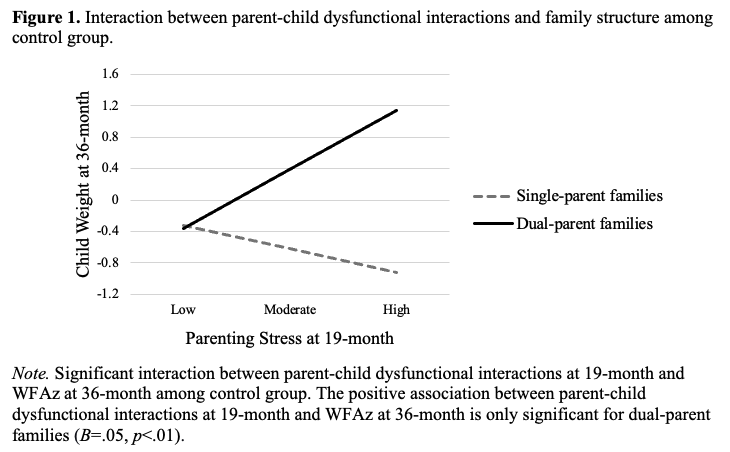Developmental and Behavioral Pediatrics: Parenting
Developmental and Behavioral Pediatrics 5
683 - Longitudinal Associations Between Dysfunctional Parent-Child Interactions and Child Weight in Low-Income Hispanic Families: The Moderating Effect of Family Structure
Sunday, April 30, 2023
3:30 PM - 6:00 PM ET
Poster Number: 683
Publication Number: 683.307
Publication Number: 683.307
Christina N. Kim, New York University Grossman School of Medicine, New York, NY, United States; Mary Jo Messito, New York University Grossman School of Medicine, New York, NY, United States; Radhika R. Teli, New York University Grossman School of Medicine, New York, NY, United States; Marc Scott, New York University Grossman School of Medicine, New York, NY, United States; Michelle W.. Katzow, Feinstein Institutes for Medical Research, Cohen Children's Medical Center, New Hyde Park, NY, United States; Rachel S. Gross, New York University Grossman School of Medicine, New York, NY, United States
- CK
Christina N. Kim, PhD (she/her/hers)
Postdoctoral fellow
New York University Grossman School of Medicine
New York, New York, United States
Presenting Author(s)
Background: Parenting stress contributes to the development of dysfunctional parent-child interactions, which in turn is linked to obesogenic behaviors in children. Participation in a supportive intervention during the perinatal period may mitigate the negative effect of poor parent-child interactions on child weight. Given that single mothers are more likely to report parenting stress than partnered mothers, effects of parenting stress and mitigation by supportive interventions may vary by family structure.
Objective: 1) To assess the effects of the Starting Early Program (StEP) on the longitudinal association between parent-child interaction quality and child weight. 2) To explore variations of this association by family structure.
Design/Methods: We conducted a secondary analyses of longitudinal data from the StEP randomized controlled trial. StEP is a primary care-based child obesity prevention intervention beginning in the third trimester of pregnancy for low-income Hispanic families. The independent variable is the dysfunctional parent-child interactions subscale of the Parenting Stress Index at child age 19 months. The dependent variable is child weight for age z-scores (WFAz) at age 36 months. Other family demographic characteristics, including family structure (single vs. partnered parents) were collected at child age 19 months. Multiple linear regression was conducted separately for control and StEP groups to test the main effects and interaction effect of parent-child interactions and family structure at 19-months on child weight at 36-months.
Results: In this study, 280 mother-child dyads (139 in control group and 141 in StEP intervention group) were analyzed. About 20% of mothers reported being single, and 80% were living with partner (47% married and 33% cohabiting). Regression analyses controlling for confounders revealed that higher levels of parent-child dysfunctional interactions predicted greater WFAz in the control group (B=.03, p=.02), but not in intervention group (B=.01, p=.45). Family structure moderated the association (B=-.07, p=.05) in the control group, such that the positive association was only significant for dual-parent families (B=.05, p< .01).
Conclusion(s): Participation in a supportive intervention attenuates the adverse impact of dysfunctional parent-child interactions in early toddlerhood on child weight at 3 years. Future research is needed to help explain the differential effect of family structure on the association between parent-child interaction quality and child weight.
.png)

